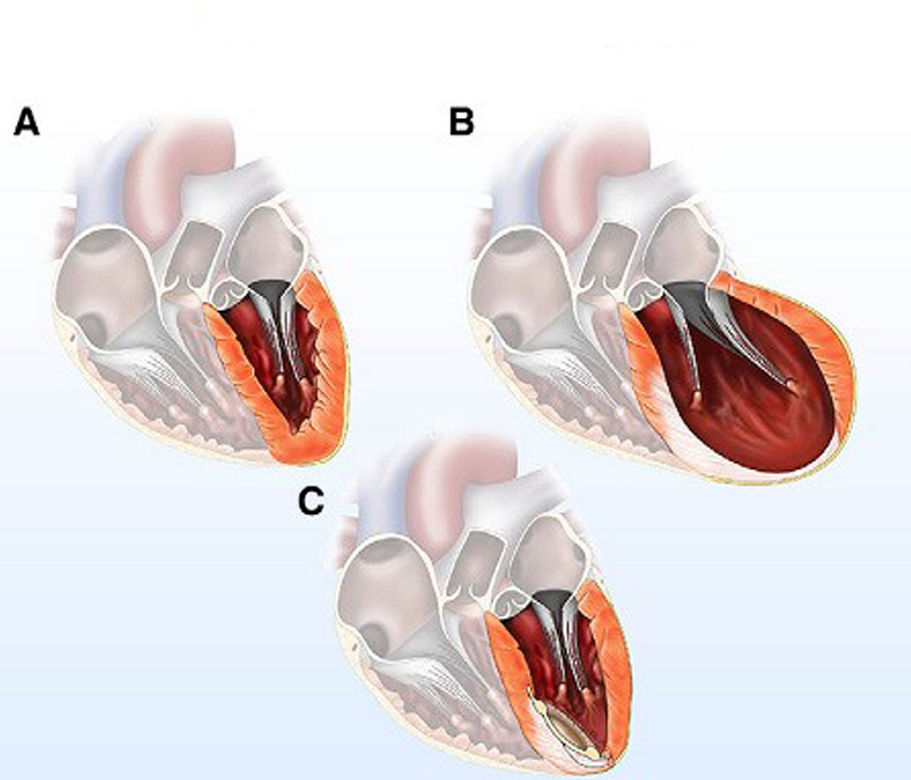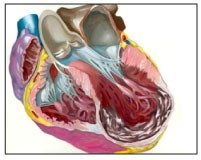 Surgical Ventricular Restoration
Surgical Ventricular Restoration
Overview:
(SVR) is a surgical procedure to treat congestive heart failure caused by myocardial infarction (heart attack). Following a heart attack, scar or an aneurysm may develop resulting in an enlarged rounded heart. This may lead to congestive heart failure (CHF). The goal of the SVR is to restore the heart to a more normal size and shape, therefore improving function. The SVR procedure is usually performed in conjunction with coronary artery bypass grafting (CABG) to ensure optimal blood supply to the heart. Some patients will also have valve repair.
The patients who will benefit the most from SVR have certain traits:
They have had a heart attack which resulted in the formation of an aneurysm or scar in the left ventricle, and now have enlarged hearts; AND
They have systolic heart failure (the type of heart failure that causes poor heart pumping); AND
Have Symptoms: Shortness of breath, fatigue, swelling, unusual weight gain, that are not relieved with medications and lifestyle changes; OR :
- Angina (chest pain) that is not able to be controlled with medications; OR
- Ventricular tachycardia (an electrical rhythm in the left bottom of the heart that makes the heart beat too quickly causing you to pass out, feel lightheaded or feel rapid pounding); OR
- You may have severe coronary artery disease (blockages of the arteries of your heart), or valve disease that requires surgery.
Some patients who have been told that they need a heart transplant may benefit from an SVR procedure as an alternative to transplantation. We will evaluate your needs and work with your cardiologist to determine if this may be a good alternative to transplantation.
- Echocardiogram (ECHO): A test which uses sound waves to create a picture of your heart and help us determine how well your heart functions as a pump.
- Cardiac Catheterization (Cath): A catheter placed in your groin allows pictures to be taken using X-rays and dye. These pictures help your team determine the function of your heart, along with the condition of the coronary vessels of your heart, to determine if bypass grafting is needed.
- Magnetic Resonance Image (MRI): A test which uses magnetic imaging to create a picture of your heart and its structures, and helps guide surgical decision making. This is often a preferred way to determine if you are a candidate for SVR. If you have an AICD or pacemaker a special cardiac CT may be obtained.
You may also hear of similar procedures named: Dor procedure, LV reconstruction, and septal reshaping.

During the SVR procedure the patient is placed on a heart lung machine. The surgeon will make a small incision into the left bottom part of your heart, through scarred tissue. The heart is opened, and a plastic model of a specific size is used to reshape the heart.
